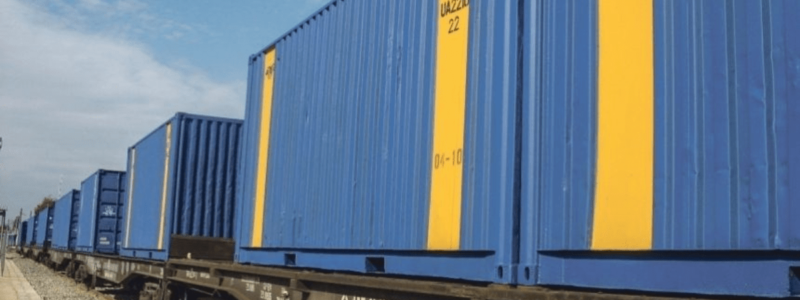
In 2023, Ukrzaliznytsia (UZ) transported 201.26 thousand twenty-foot equivalent containers (TEUs), up 34% from 2022 and in line with the figures for 2019 before the war, Valery Tkachev, deputy director of the company’s commercial department, said on Wednesday at a meeting on the development of intermodal transportation.
According to him, before Russia’s full-scale invasion, UZ’s container transportation had been growing by 11-22% for four years, including 14% in 2021, but after Russia’s full-scale invasion in 2022, it fell by 46% to 150 thousand TEUs.
“If in 2021 we already reached 279,792 thousand TEU, in 2022 we fell to 150 thousand TEU, that is, 46%,” Tkachev emphasized.
He noted that the rapid recovery of container transportation in 2023 was due to the blocking of Ukrainian seaports.
“If you look at the traffic, 62% of all container transportation is export, 19% is domestic transportation, and 19% is import,” he described the market.
The UZ representative added that grain is the most popular containerized cargo, accounting for 49%. Ferrous metals are in second place (17%), followed by oil cake (14%) and oil (10%).
Tkachev emphasized that the 2023 figures, although positive, are significantly lower than those set out in the development strategy of Ukrzaliznytsia, which provided for the transportation of more than 1 million TEUs per year.
He reminded that in March 2023, UZ launched the intermodal train service, and almost 200 trains were sent.
At the same time, the deputy director of the commercial work department noted that after testing the counter-rail transportation to Poland in December 2023, problems with tariffication arose.
“We are still receiving invoices from the Polish side. There was an agreement on a comprehensive rate, but for some reason the Polish colleagues continue to adjust it, so we are now working with the Polish side to get a single comprehensive rate for this service, and then we will be able to work more rhythmically and transport container trains,” added Tkachev.